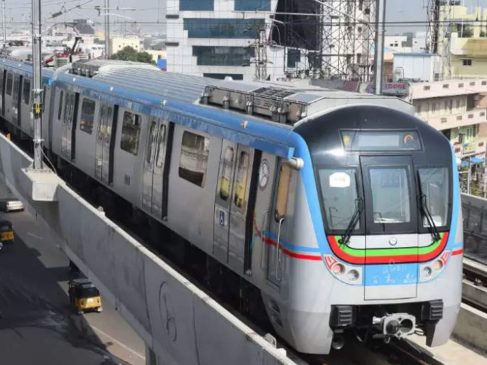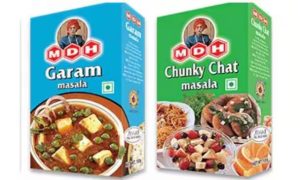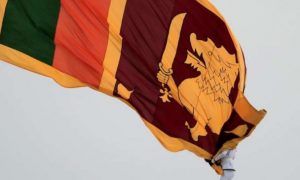The Budget has announced 400 more of these semi-high-speed trains in the next 3 years. What is the timeline for the rollout, what will it cost, and how will the new trains be different from the two already running?
In her Budget speech, Finance Minister Nirmala Sitharaman announced that 400 Vande Bharat trains will be manufactured in the next three years.
Introduced in 2019, the Vande Bharat semi-high speed trains have been a novelty so far. Two Vande Bharat trainsets (originally called Train 18) are currently running, both from Delhi — to Varanasi and Katra.
The Budget announcement signals the government’s intent to turn these self-propelled trainsets, as opposed to locomotive-hauled trains, into the future normal for India’s century-old railway system. It comes in addition to the current plan — to be able to run 75 Vande Bharats across India by Independence Day in 2023.
What’s Vande Bharat
Vande Bharat is a semi-high speed trainset, each of 16 coaches, and self-propelled — they do not require an engine. This is called a distributed traction power system, which is increasingly becoming the norm the world over for passenger operations. Distributed power gives the train higher acceleration and deceleration compared to loco-hauled trains, which take a much longer time to reach top speed or to gradually come to a halt.
On a journey of, say, 500 km with 10 stoppages, a conventional train loses a lot more time than a trainset. A trainset gains higher average speed during the same journey, and in sections where it is allowed, also clocks semi-high-speed of 160 km/h. With shorter journey time, a trainset is theoretically able to cover more trips, thereby carrying more people.
The current Vande Bharat trains have seating only in two classes — chair car and executive chair car. Railways is already in the process of making 102 new Vande Bharats, which will be an upgrade from the current two Vande Bharat trainsets.
The economics
Going by the cost of the current trainsets, the 400 announced by Sitharaman carry a potential investment of Rs 50,000 crore over the next three years.
The current Vande Bharats are being made at Rs 106 crore per trainset of 16 cars, at 2018 pricing. The future ones will cost slightly more, because of different specifications and also inflation.
“Going by the industry practice, the sheer manufacturing of 400 of these trainset equipment in three years, if they can indeed make them in three years — there will be additional employment generation to the tune of 10,000-15,000. And pumping in around Rs 50,000 crore into the country’s rolling stock industry, even if we take it as Rs 10,000 crore per year, means a big boost in the sectors of component manufacturing, supplies etc,” said Sudhanshu Mani, former GM of Integral Coach Factory, Chennai and the chief architect of India’s first Vande Bharat project.
Calling the Budget announcement a “new target”, Railways Minister Ashwini Vaishnaw has said these will be an upgrade. “Like mobile phones that are launched are an upgrade from their previous versions, the subsequent Vande Bharats will also be upgrades,” he said.
Trainsets in the making
Forty-four new Vande Bharat trainsets, the propulsion of which is being designed by Hyderabad-based Medha Servo Drive, will start rolling out from May this year. The first one will undergo testing and trials in May and the second in June, the Railways Ministry says. From August-September, 5-7 trainsets will be produced per month in three production units: ICF Chennai, MCF Rae Bareli, and RCF Kapurthala.
These trains will have improvements in terms of better seating, anti-bacterial system in AC, less noise, the ability to hit 160 km/h in 140 seconds, and other aspects.
For the next batch of 58 trains, tenders were called for and nine firms have been shortlisted, including Medha, Siemens, BHEL, Titagar Wagons, and Bombardier.
From the seating-only configuration, work is on to bring in sleeper-type Vande Bharats for overnight journeys. They may be introduced within these batches.
The 400 new trains
The Budget has announced that the 400 new trains will have “better efficiency”. In Railways, that has translated into being more energy-efficient than the present stock, along with other upgrades internally.
For that, Railways is looking at making several of these trainsets with aluminium instead of steel. An aluminium body will make each trainset around 40-80 tonnes lighter than a current Vande Bharat, officials said. This will mean lower consumption of energy as well as better speed potential.
“We will be platform-agnostic and material-agnostic. The ask will be to make the new trains more energy-efficient and have an overall more upgrade than the last lot. There is aluminium, but the industry may demonstrate anything better also, if that meets our requirement,” said a senior Railway Ministry official.
India had so far shied away from making aluminium coaches because they are typically more expensive than their steel counterparts. If made with aluminium, the Vande Bharats may cost around Rs 130 crore per trainset, sources said. However, engineers say the overall gain comes from the saving of energy and better speed, translating into higher earning potential. Railways wants these trains to be unmatched in terms of reduced noise levels and better stability as felt by passengers riding them, besides being safe.
The Railways is looking at a speed potential of 250 km/hr. For that, however, the tracks across the country would need an upgrade.
Chasing the target
In Railways, there is confidence that the target of making 400 trainsets will be met in three years. Outside Railways, there is caution.
“Any player that brings in a new propulsion system for the trainset will need around two years to deliver the first trainset. But overall it’s a good intent and if the government wants it can do it, even though it’s a tall order,” Mani said.
Industry players told The Indian Express that in order to achieve the target, Railways will have to pool in all resources and multiple players to deliver the propulsion system and also carry out the assembling.
“The industry players and Railways manufacturing units, both shall need close coordination and timely allocation of resources and regular monitoring to ensure the induction of these trains in the shortest time possible, as envisaged by Indian Railways,” Tilak Raj Seth, member of Railway Equipment Division, Confederation of Indian Industry, told The Indian Express.
The Railway Board has formed a committee to recommend how best to go forward. Sources said chances are high that multiple players are engaged to complete the order in three years. “This does not seem like the job of one player given the timeline specified. But yes, if multiple players are pooled in simultaneously, it can be done,” said an industry source.



































